
A small garden offers more potential than you might think. With the right concept, limited space can be used effectively and implemented cost-effectively. Our 20 tips will help you.
To the point
- Optimize space
- Create a garden plan
- use small plants
- Obtaining materials via classified ads
Table of contents
- Tips for saving space
- Garden vertically
- Integrate potted plants
- Folding furniture helps
- Plants and self-sufficiency
- Plant specialized crops
- Ground cover instead of lawn
- Columnar fruit
- Composting
- Propagate independently
- materials
- Use classified ads
- Go looking for an offer
- Order larger quantities
- Use topsoil
- Buy tools specifically
- Projects
- Vegetable and flower beds
- Alternative raised beds
- Create favorable paths
- Homegrown hedge
- 2-in-1 seating area
- Wild corners
- Insect hotel
- Birdbath
- Water feature
- frequently asked Questions
Tips for saving space
Small gardens don't have to make you despair. Before you start planning, you need to be clear about the space available and how it will be used. Think about what you want to use the garden for. If you prefer a relaxation oasis instead of a vegetable garden, you use the available space completely differently. We have a few tips for you.

Garden vertically
Small gardens benefit from height. For example, use trellises, old Euro pallets or a hill with several steps to fit more plants into a smaller space. Even pumpkins can be cultivated using lines pulled diagonally from the ground, leaving the space beneath them free. Vertical gardening allows you to make the most of your garden.
Integrate potted plants
To make full use of the space in your garden, you should use potted plants. These can be used for many small garden concepts.
Examples:
- Hanging garden above Hanging baskets
- Mediterranean Herb gardens
- Rock gardens
- Rose gardens
- orchards
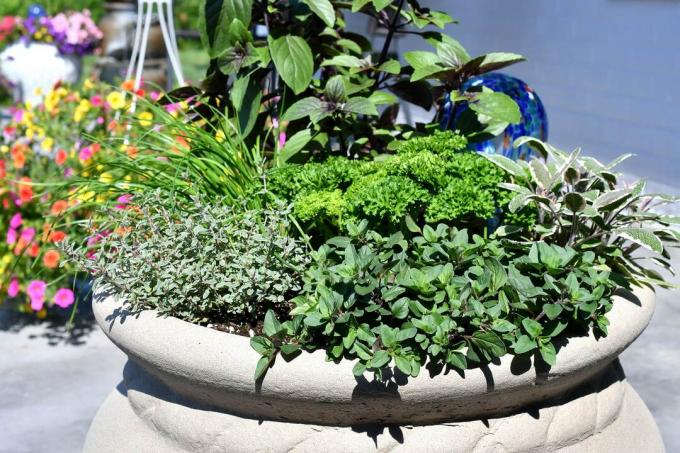
If you don't feel like having lawns or natural soil at all, or if you don't have it available, you can use the potted plants decoratively and even as a privacy screen.
Folding furniture helps
Preferably use folding furniture in the garden. These can be folded up as needed and stored on a wall, a small shed or in the house. Garden furniture with additional storage space is also suitable if you primarily use the garden for relaxation.
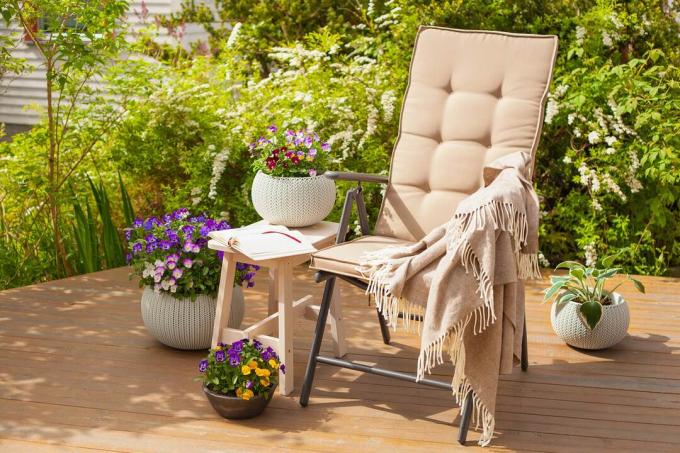
Plants and self-sufficiency
Whether you want to grow vegetables or plant a romantic corner, there are certain plants that are better suited to small gardens than others. You can also share part of your Use the garden independentlyto reduce future costs. Our tips will help you.
Plant specialized crops
Ideally, for a small garden, you should use either perennial, drought-resistant and fast-growing plants for design. These fill your garden accordingly and the maintenance effort is significantly lower. Grasses such as Atlas fescue (Festuca mairei) or perennials like asters (Aster) can be combined with herbs such as steppe sage (Salvia nemorosa) combine to keep the maintenance effort as low as possible. This reduces the amount of maintenance required, which is often helpful in small gardens.

Ground cover instead of lawn
Cheaper than classic lawns and just as good for mini gardens Suitable for ground cover. The plants also protect the soil from drying out and have a positive effect on the soil structure. Ground cover plants can be planted specifically and many are even sturdy.
Columnar fruit
If you want to grow fruit in your small garden, this is an option Columnar fruit at. You can cultivate the plants in a pot or place them where you want without taking up too much space.
Popular varieties are:
- Columnar apple 'La Torre' (Malus domestica 'La Torre')
- Columnar pear 'Conference' (Pyrus communis 'Conference')
- Columnar cherry 'Karina' (Prunus avium 'Karina')
- Mirabelle Mirabelle 'Ruby' (Prunus domestica subsp. syriaca 'Ruby')
- Column plum 'Bühler Frühzwetschge' (Prunus 'Bühler Frühzwetschge')
Composting
As a rule, you hardly have to buy any additional fertilizer for your mini garden if you compost yourself. You can even compost in your home using kitchen composters or Kobashi systems.

If you keep a few things in mind, that is Creating a compost heap not that difficult at all.
Propagate independently
Use offshoots that Division of root balls or self-sowing the plants in your garden in order to regularly supply yourself with new specimens. This not only saves you money, but often empty positions are closed automatically. The more natural you want to make the garden, the better this method is.

If you have a good relationship with your neighbors or your family gardens, you can of course ask them about divisible plants, seeds or trees that you no longer want. This means you can even find some treasures for your own garden.
materials
One of the most important aspects when planning a small garden with little capital is the materials. Stones, earth or elements for a small wall can cost a lot of money, which doesn't have to be the case. The following tips will help you obtain materials for your garden projects cheaply.
Use classified ads
If you want to save money when designing your small garden, classified ads in the area are particularly valuable. You can use these to find plants, bulk materials, panels, wood, tools and even pond liner or chain link fencing for your garden. Many people even offer their plants for free as long as you remove them from the ground and transport them yourself.
Go looking for an offer
Keep an eye on the offerings at your local hardware store or nurseries. These can range from discounted bulk material for your garden paths to heavily discounted tools or electrical appliances such as a pond pump. You may have to put some projects on hold for your small garden, but you can save on them.
Order larger quantities
If possible, you can order larger quantities of the materials and receive a discount. This is particularly recommended if, for example, you want to create several garden paths with gravel.
Use topsoil
If you want to completely redesign your small garden, this is an option topsoil at. You can also get this cheaply through classified ads or online file sharing sites or even free of charge if you pick it up yourself. This means you don't have to buy expensive soil in bags.
Buy tools specifically
Don’t just blindly get any supplies. Before buying, check the tool, compare it and decide whether you really need it. An example is lawnmowers. Cylinder mowers are often sufficient for small gardens.
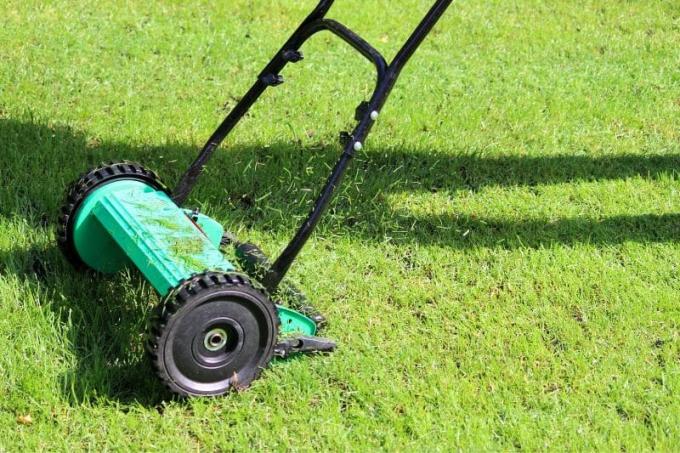
Insider tip: You should buy flower bulbs in larger quantities before the start of winter if you want to save money. Many shops and hardware stores offer these cheaper before the cold season.
Projects
Of course belong to one Garden specific elements, which are used for comfort, the cultivation of plants and as a habitat for beneficial insects. These don’t have to be expensive and can easily be implemented by you alone.
Vegetable and flower beds
A classic bed can easily be used in a small garden as long as you prepare the soil accordingly.
Here's what you should do:
- dig up
- Remove roots and stones
- enrich with compost if necessary
- Sand as drainage

Mixed crops are ideal for small gardens. A Planting plan helps you to make optimal use of the beds, for example through additional intermediate plants such as herbs. If Perennial border, vegetable patch or maybe even a whole snack garden – let your creativity run wild!
Alternative raised beds
A raised bed is also an excellent way to create and design small gardens. You can build the simplest variant of a raised bed independently from Euro pallets, which you line with mouse wire and a garden fleece. It couldn't be easier and you can even add additional pots to the beds.
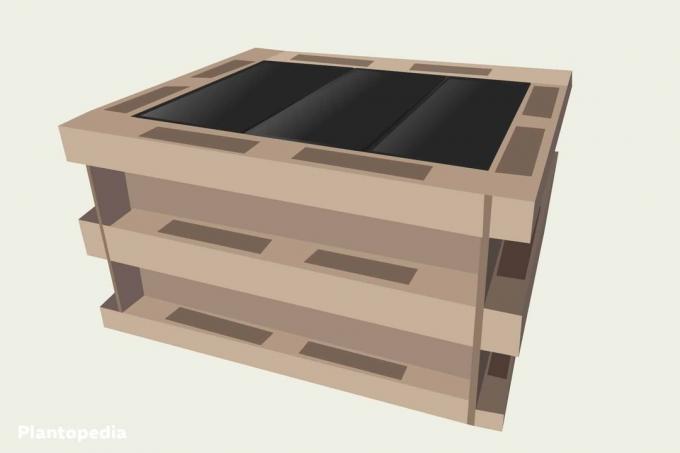
Create favorable paths
When creating paths, avoid using stone slabs or paving stones if you cannot get them cheaply. For paths you need either gravel or Bark mulchto keep costs down. If you like the look, there are even compacted sand paths for the mini garden.
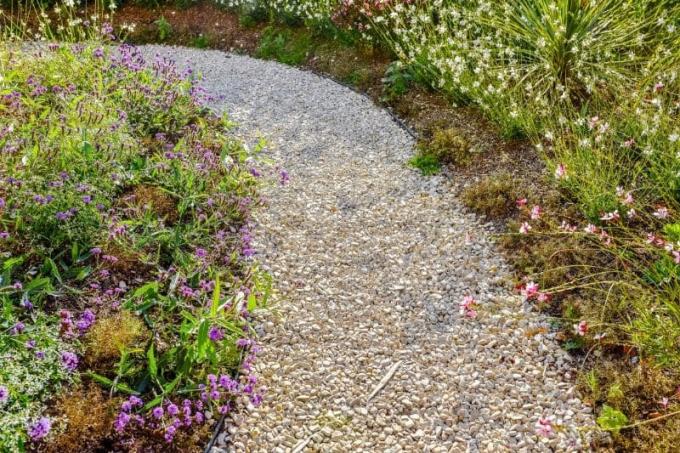
The process is quite simple:
- Mark out the path
- Width in mini gardens usually 50 cm
- Remove sod
- Depth of min. 5 cm necessary
- Set edge border
- cheap metal edges are sufficient
- Place weed fleece
- Fill in path material
Homegrown hedge
Use suitable plants to grow a hedge yourself from cuttings over several years. This means you don't have to buy expensive hedge plants.
Suitable for this are:
- Spire bushes (Spiraea)
- Roses (pink)
- Hornbeams (Carpinus betulus)
- European beeches (Fagus sylvatica)
- Field maple (Acer campestre)
Why not just suitable ones? hedge plants Plants that also benefit birds and insects and at the same time offer good privacy protection?
2-in-1 seating area
A mini tool shed on one side, a seating area on the other. To design your small garden, build a small terrace to match the size of your garden and divide it with a wall. Combined with a roof, you now have a seating area and can store tools on the other side.
Wild corners
Take wood cuttings and leaves, place them in a corner and this project is finished. Wild corners can be expanded from year to year and offer shelter to numerous insects, small mammals and even reptiles and amphibians. Alternatively, simply rewild an area in your garden if you don't know how to do it.

Also the Building a Benje hedge is ideal in a garden.This also has many advantages and investing is not that difficult.
Insect hotel
It's not just wild places that are ideal for attracting beneficial insects. An insect hotel also helps and can be easily implemented with a grid tile.
Proceed:
- Deburr grid tiles
- fill some holes with wooden tubes
- hang with cord
- setting it up is also possible

This method is particularly suitable for wild bees. You can also make boxes made of untreated wood with tubes, sticks and other nesting material fill for the animals.
It is very important to fully understand how to build an insect hotel because some can Mistakes are made, which can harm wild bees or prevent them from living in the insect hotel.
Birdbath
If you want to invite birds into your garden, you don't have to buy a bird bath. All you need for a cheap bird bath is the base of a large flower pot without a drain hole. It should be flat enough and sufficiently large. You can simply place the plate in the garden. You can use a cord to tie a net under the bird bath and hang it up to protect birds from potential predators while drinking.

Water feature
Water features are small garden ponds that are built in steps and therefore take up hardly any space in the garden. Perfect for designing a small garden if you would like to hear the splashing. Although you need a pump to move the water, you need significantly fewer materials for the project and can even plant aquatic plants. The simplest form of a water feature consists of two bowls with different volumes, which you place one inside the other, fix and place the pump there.
frequently asked Questions
If possible, avoid projects such as tool sheds more than three meters or walls over two meters high, as you usually need building permission for these. Not only are the costs for such structures quite high, you even have to pay for the building permit. In general, even smaller structures such as a staircase or a Slope attachment It will cost you money if you don't implement it yourself and hire someone.
Make sure Rain barrels if there is still space for them. This method is particularly ideal for gardens with little space to collect enough water for the plants over the summer. Even small buckets are suitable for this.
Ideally, you should use your own means of transport and look for the necessary materials directly in your area. Even a bicycle with a trailer is enough to safely transport soil and plants. Alternatively, you can use local public transport or car sharing services if you want to transport individual items such as small trees home. Of course, you can ask family and friends to help you with the transport.


